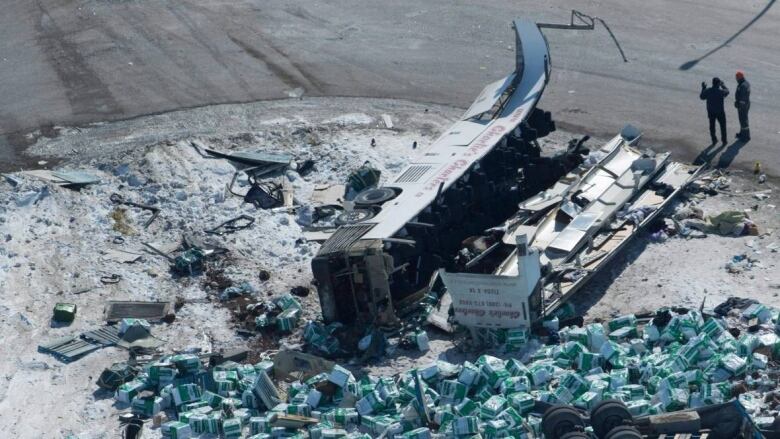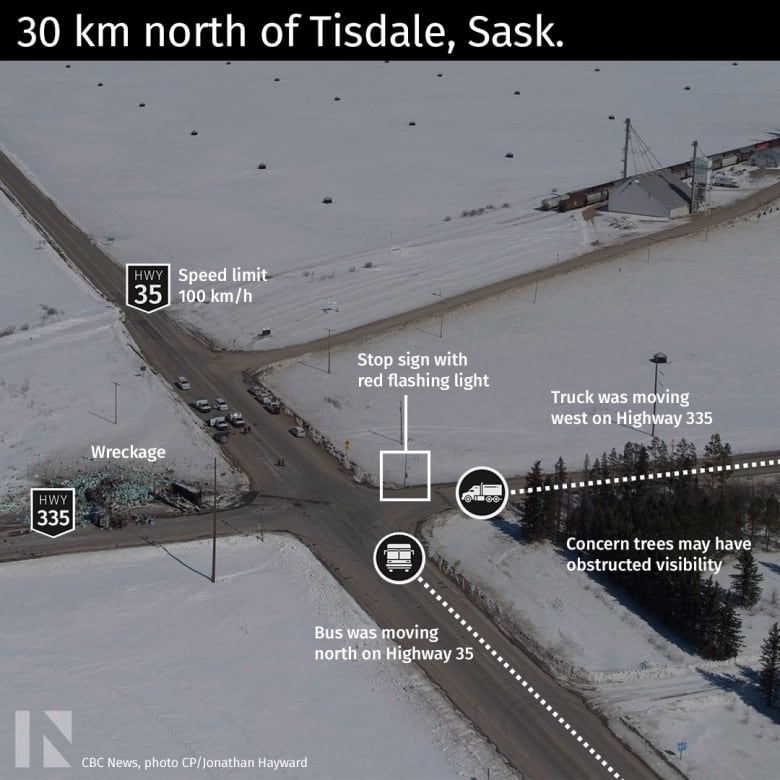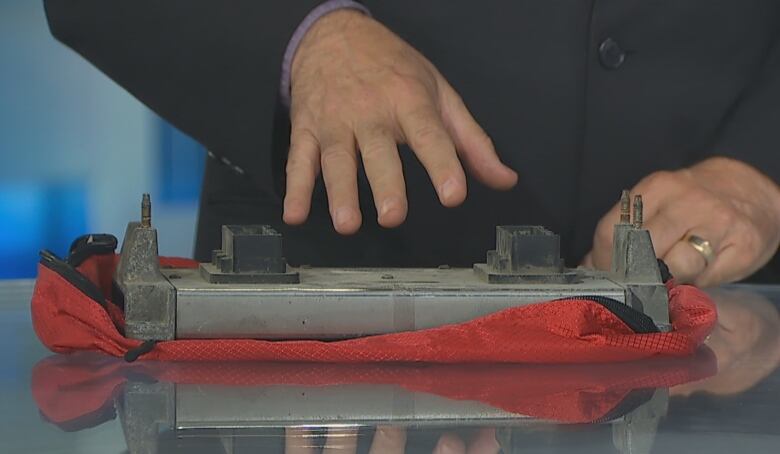'There's just so much to look at': Broncos crash investigation could take months, says former investigator
'These are very complex investigations,' says former Ontario Provincial Police crash investigator Brad Muir

Only basic details about thefatal April 6 Humboldt Broncos bus crash have been released, and a veteran crash investigator says it can often be weeks before a clear picture surrounding a crash is defined, while more complex investigationscan take months to complete.
Brad Muir, a former crash investigator for the Ontario Provincial Police, says there are three key factors crash investigators consider: the vehicles involved, the people involved and the environment, which includes the crash site.
"These are very complex investigations," said Muir,who is not involved in investigating the April 6 crash.
"I would expect the investigators will have a pretty clear picture within the first couple of weeks of the root cause of the collision. But it will take definitely months to tie in all the final loose ends of the pieces. There's just so much to look at."
Sixteen people are dead after the charter bus carrying the Saskatchewan Junior Hockey League's Humboldt Broncos was involved in a collision with a semi-truck north of Tisdale, Sask. which is 195 kilometres northeast of Saskatoon earlier this month.
Fourteen people were killed in the collision and two others died during the following days.The 13 other occupants of the bus were injured.
What we do know so far is thatthe truck was travelling westbound on Highway 335 and the buswas travelling northbound on Highway 35 at the time of the collision.

There is a stop sign at the intersection,which hasa flashing light to draw attention to it,and the bus had the right of way. There are no rumble strips approaching the intersection.
Muir said if he was investigating the collision and scene, the biggest question for him would be the stop sign.
What was the size of the stop sign? Where was the sign in relation to the intersection? Before the intersection, was there a warning sign of an upcoming stop sign? Those are all questions the investigation will look at, he said.

The RCMP would have the resources to scan the site and virtually recreate it for further investigation, Muir said, and will also look at details such as the tire marks on the road, debris, where the vehicles involved came to rest and the damage to the vehicles.
"That's a very key piece. That damage can tell us a lothow they came into contact, which vehicle was where."
One of the sources of information that could be available to investigators would be the engine's computer, if there was one equipped on either vehicle.
Muir said it would not provide as much detail as an airplane's black box, but would provide details about thespeed, brake use or accelerator use on the vehicle.

Another consideration is the human factor. Muir said he'd expect investigators will look into the experience of the driversand how familiar they were with the route they were driving.
"There is no teacher like experience," Muir said.
The Carrot River example
A past tragedy involvinga semi on a Saskatchewan highway demonstrates how long crash investigations can take.
Carter Stevenson, 17, Justin Gaja, 14, and Kristian Skalicky, 15, all from Carrot River, were killed when the car they were in was rear-ended by a semi while stopped in a construction zone.
It was more than three months before the driver of the semi,Normand Mark Joseph Lavoie, was charged and more than two years before he pleaded guilty and was sentenced for dangerous driving causing the deaths.
Police have given no indicationthat charges are forthcoming in relation to the Humboldt crash.
With files from CBC News Network













_(720p).jpg)


 OFFICIAL HD MUSIC VIDEO.jpg)
.jpg)



























































































